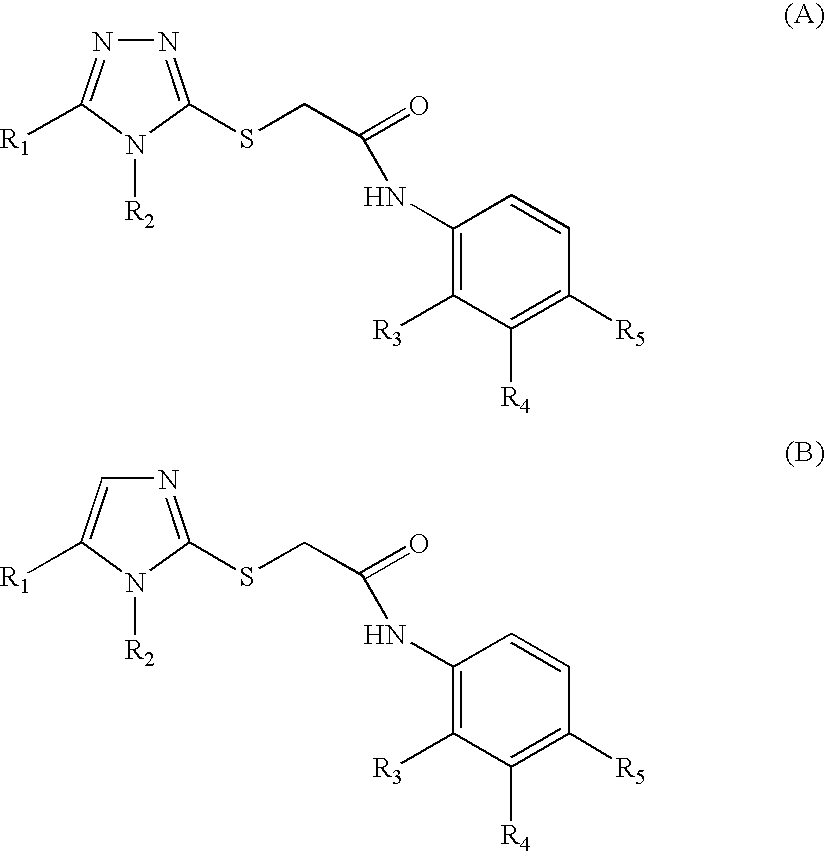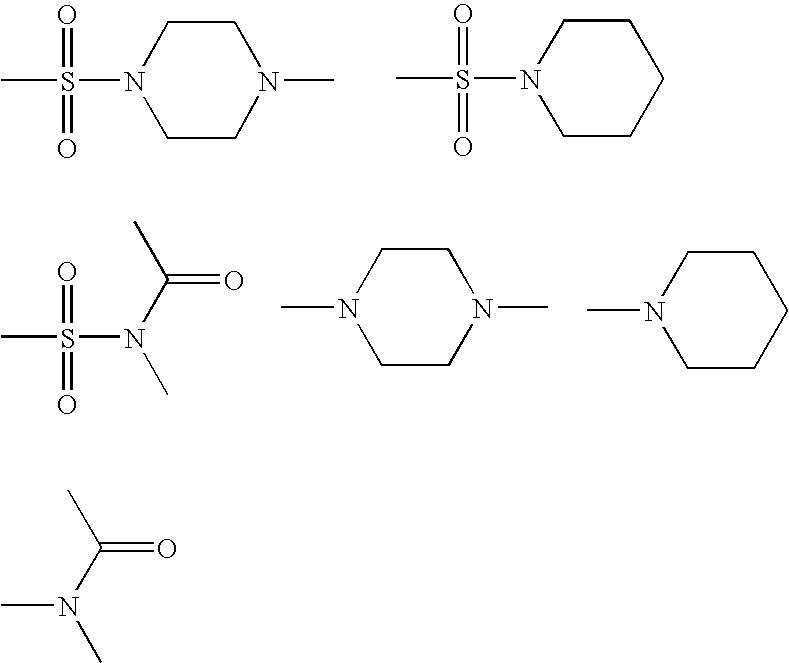Non-nucleoside reverse transcriptase inhibitors
a reverse transcriptase and non-nucleoside technology, applied in the field of enzyme inhibition, can solve the problems of inability to meet the requirements of the patient, low cost of currently known non-nucleoside-type inhibitors, and limited number of non-nucleoside-type inhibitors available for treatment of hiv infection patients, so as to inhibit the reverse transcriptase and reduce viral propagation
- Summary
- Abstract
- Description
- Claims
- Application Information
AI Technical Summary
Benefits of technology
Problems solved by technology
Method used
Image
Examples
examples
[0093] The following experiments are provided only to illustrate exemplary aspects of the inventive subject matter and should not be understood as limiting the inventive subject matter.
N-(2-Bromo-4-methylphenyl)-2-(5-methyl-4-phenyl-4H-[1,2,4]triazole-3-ylsulfanyl)-acetamide
[0094]
[0095] 5-Methyl-4-phenyl-4H-1,2,4-triazole-3-thiol: A suspension of 4-phenyl-3-thiosemicarbazide (10 g, 59.8 mmol) in dimethyl acetamide dimethyl acetal (30 mL, 205 mmol) was heated in an open flask on a steam bath for 1.5 h. Removal of the solvent and flash chromatography of the residue (2% methanol / dichloromethane) affords a mixture of 5-methyl-4-phenyl-4H-1,2,4-triazole-3-thiol and 3-methyl-5-methylthio-4-phenyl-4H-1,2,4-triazole.
[0096] N-(2-Bromo-4-methylphenyl)-2-chloroacetamide: 2-Bromo4-methylphenyl (500 mg, 2.69 mmol) was added to a mixture of chloroacetylchloride (0.14 mL, 2.69 mmol) and diisopropylmethylamine (0.47 mL, 2.69 mmol) in dichloromethane (16 mL). After 4 hours of stirring the mixture...
PUM
 Login to View More
Login to View More Abstract
Description
Claims
Application Information
 Login to View More
Login to View More - R&D
- Intellectual Property
- Life Sciences
- Materials
- Tech Scout
- Unparalleled Data Quality
- Higher Quality Content
- 60% Fewer Hallucinations
Browse by: Latest US Patents, China's latest patents, Technical Efficacy Thesaurus, Application Domain, Technology Topic, Popular Technical Reports.
© 2025 PatSnap. All rights reserved.Legal|Privacy policy|Modern Slavery Act Transparency Statement|Sitemap|About US| Contact US: help@patsnap.com



